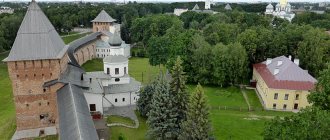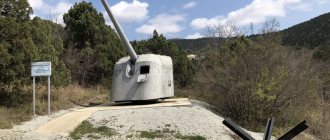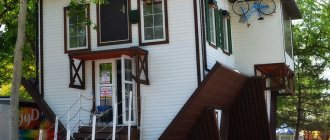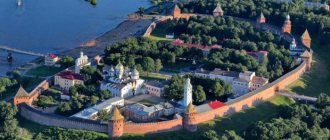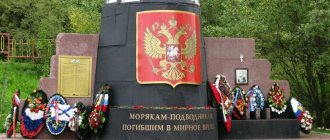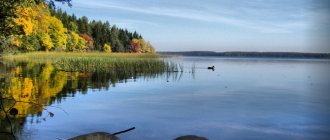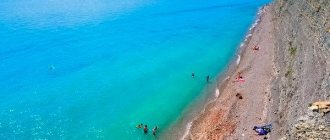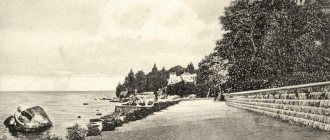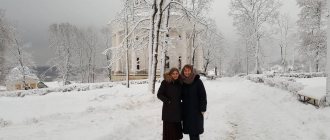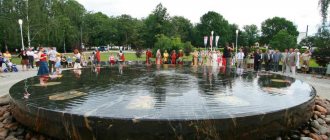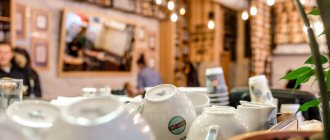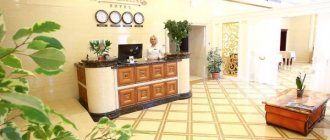The ancient Russian city has preserved the unique heritage of different eras. We share routes around Veliky Novgorod: the main attractions that you can see in 1 or 2 days on your own.
Any trip brings maximum pleasure if it is well planned. In the city, which many centuries ago was the first republic on the territory of Rus', churches from the pre-Mongol period, medieval temples, fortifications and monasteries have been preserved. You can see all this in Veliky Novgorod on your own in one or two days.
Look for interesting excursions on the Sputnik and Tripster websites. Individual and group, without crowds of tourists and in Russian.
Program of stay in Novgorod: main options
Our three routes are designed primarily for those who are traveling to Novgorod or for the first time and want to see everything that they usually watch. They are built according to the matryoshka principle:
1) Novgorod Kremlin + boat trip along the Volkhov to Lake Ilmen + Yaroslav’s Dvorishche (about 4 hours); 2) Novgorod Kremlin + boat trip along the Volkhov to Lake Ilmen + Yaroslav’s Dvorishche + Vitoslavlitsa Museum (6-8 hours); 3) Novgorod Kremlin + boat trip along the Volkhov to Lake Ilmen + Yaroslav’s Dvorishche + Vitoslavlitsy Museum + Yuriev and Nikolo-Vyazhishchi Monasteries (10-12 hours).
Below we have described all stages of the route in the same sequence in which they are listed.
We assume that your sightseeing trip begins on the square in front of the train and bus stations and ends here.
To choose the optimal transport and arrival/departure time, read our material on how to get to Veliky Novgorod.
Novgorod Kremlin: how to get there, prices, tickets, monuments
Veliky Novgorod, like Ryazan, Rostov, Moscow, Kazan, Astrakhan and a few other Russian cities, has its own Kremlin. Moreover, this city is the oldest in the whole country and it is also the northernmost.
It is from the Kremlin that we recommend starting your journey around Novgorod, and not so much because it is the most important attraction, but from the point of view of the most optimal route.
Getting to the Kremlin is very easy. After arriving in Novgorod (the train and bus stations are located in the same place), you need to turn your back to the train station and walk straight along the alley, along Voskresensky Boulevard.
Along the way you will pass by a cinema...
and the buildings of the Government of the Novgorod region.
Actually, right opposite this building, across a large square (also known as Sophia Square and also known as Victory Square), there is a gate to the Novgorod Kremlin, entry to which is free. The entire journey from the station to the Kremlin takes about twenty minutes at a leisurely pace.
Inside the Kremlin there are several objects included in the mandatory program of every tourist. The first thing worth paying attention to is the monument “Millennium of Russia” ( ) by Mikhail Mikeshin, consisting of three levels and 128 figures of major state, religious and cultural figures. Created in 1862, the monument suffered quite a lot during the Great Patriotic War: it was cut into pieces by the Nazis, who wanted to take it to Germany. Some parts even left the Novgorod lands for a while.
Opposite the Millennium Monument is the main Orthodox church of Veliky Novgorod - Hagia Sophia (pictured in the background). Today the Cathedral is operational, services are periodically held there, and admission is free for visitors.
If you look closely, you can see a dove on the cross of the main dome of Sofia, which serves as one of the symbols of Veliky Novgorod. There has long been a legend among local residents about how a dove, during Ivan the Terrible’s massacre of the freedom-loving Novgorodians, sat down to rest on the cross and was petrified with horror when it saw what was happening. The dove became a symbol of the Holy Spirit and, according to legend, guards the city.
Near the Kremlin gate opposite to the entrance is the Sofia Belfry, near which there are six large bells.
Like the Cathedral, the belfry is open to tourists.
And for those who want to view the Novgorod Kremlin from all sides, the belfry sells tickets to the Kremlin’s Battle Course - to the Kremlin wall. It offers a wonderful view of the embankment of the Volkhov River, and while walking along the wall you can look into some of the towers. One of them presents the battle armor of ancient Russian knights.
The entrance to the Kremlin's Battle Passage is located to the right of the belfry (in the photo above). Usually there, near the booth, there are two daredevil archers standing and checking tickets (see photo below).
Prices for visiting the belfry of St. Sophia Cathedral and the Battle Passage
Belfry or Battle course for a single ticket 300 rubles, student - 200, children under 16 years old - 120.
The belfry and the Battle Passage are open from 10.00 to 14.00 and from 15.00 to 18.00 (Friday to Sunday - until 20.00) in spring and summer. In autumn and winter - until 18:00 all days. The belfry has been closed since November 6. From September 29, excursions to the Battle Course are only possible as part of a group group, that is, you cannot walk along it by yourself.
In addition to the above, the Kremlin also houses the regional philharmonic society, the regional scientific library, a music school and many other interesting objects.
In the summer, the Novgorod Kremlin sometimes hosts outdoor concerts, for example, the JUST JAZZ OPEN AIR jazz festival has already become a tradition.
Outside, the Kremlin is surrounded by a park, which has the simple name Kremlevsky. It curves around the wall, and in the shade of its trees there is a small amusement park, which will be interesting for the youngest tourists to visit. Finding it is not difficult: when leaving the Kremlin to the bridge, you need to turn right and walk along the wall for no more than ten minutes. In addition, little travelers can ride around the Kremlin on a horse or pony, which are waiting for their riders at the attractions and in the square.
In general, a walk around the Kremlin takes no more than an hour and a half, taking into account the Battle Course and the park.
What can you see in 1-2 days?
If you come to Novgorod the Great for a few days, then after the historical center you can continue the tour of the holy places of the city and visit the surrounding area.
Victory Monument
The Victory Monument is dedicated to the 30th anniversary of the liberation of Veliky Novgorod from the fascist invaders. The main figure of the monument is a rider on a horse with a ball in his hand.
Alekseevskaya Tower
The White or Alekseevskaya Tower is a fragment of the fortifications of the Okolny Town of the 16th century, which consisted of wooden walls, log houses covered with earth and stone towers. Alekseevskaya Tower is all that has survived to this day from fortifications.
Desyatinny Monastery
The building of the Desyatinny Convent, built in 1327, today houses the State Museum of Artistic Culture of the Novgorod Land. The museum houses paintings by Novgorod artists of the 20th-21st centuries, porcelain and glass items.
St. George's Monastery
St. George's Monastery was founded by Yaroslav the Wise in 1030. For many centuries, the monastery was considered the first among the Novgorod monasteries, called the Yuryev Lavra.
The main temple of the St. George's Monastery is St. George's Cathedral. This is a monumental structure with three domes and three altar projections. The height of the temple is 32 meters. On the facade of the cathedral, sections of ancient masonry were specially exposed so that you can imagine what it looked like originally.
Holy Cross Cathedral in Yuryev Monastery
The complex of the St. Yuryevsky Monastery also includes: the Spassky Cathedral, the archimandrite building, the Holy Cross Cathedral, the bell tower, the Church of the Burning Bush and the Church of the Archangel Michael. St. George's Monastery is active. Admission is free from 10.00 to 18.00.
Sculpture of Alexander Nevsky
The monument to Alexander Nevsky was erected in 1985. The figure of the prince is depicted in motion, he holds a helmet in his hand, and behind him is a cloak that flutters with the wind.
Where to go in Vitoslavice on the weekend?
Four kilometers from Novgorod, in a picturesque place, there is the Vitoslavitsa Museum of Folk Wooden Architecture.
The museum began to be created in 1964 and wooden buildings were brought here from all over the Novgorod region. Now on the territory of the museum there are more than 20 interesting buildings: churches, chapels, village huts, outbuildings and a mill. The life of local peasants is recreated inside.
The oldest wooden structure is the Church of the Nativity of the Virgin Mary from the village of Peredki, Borovichi district. The inscription on one of its bells indicates that it was cast in 1539. Find out the museum's opening hours and ticket prices here.
St. George's Monastery and Vitoslavitsa are located next to each other, I recommend combining visits to these two places.
You can visit Vitoslavitsy, St. George’s Monastery and the Peryn monastery on an individual excursion “Acquaintance with the architecture of Ancient Rus'”.
You can view the train schedule here:
Sadko
In 2009, on the eve of the celebration of the 1150th anniversary of the city, a monument to the hero of ancient epics Sadko was erected. Initially, it was installed near the Yaroslav settlement, but then it was moved opposite the hotel of the same name. By the way, the city also has the Sadko Fountain, which is located in the northern part of the Kremlin Park.
Rurik settlement: how to get there?
Novgorod was first mentioned in documents in 859 as a city founded by the Slovenes. The name itself is Novgorod, that is, a new city suggests the existence of a historical predecessor.
The Rurik settlement is located two kilometers south of the modern city on the right bank of the Volkhov River. During the excavations, which have been going on here for more than twenty years, it was possible to establish the time of construction - the 9th century. This is the first residence of the Novgorod princes, to which the Scandinavian prince Rurik arrived in 862. On the territory of the Rurik settlement there are the ruins of the Annunciation Church. You can visit the settlement from 10.00 to 17.00, except Thursday and Friday. See the location of the settlement on the map.
Monument to Peter and Fevronia
In the park opposite the Intercession Cathedral there is a monument to the Orthodox patron saints of family, love and fidelity to Peter and Fevronia of Murom.
The most ancient Church of the Savior on Nereditsa
Not far from the settlement is the Church of the Savior on Nereditsa, built in the 12th century by Yaroslav Vladimirovich in memory of his deceased sons.
The unique painting inside the cathedral, which unfortunately was lost during the Second World War, brought world fame to the church. The church was restored in the 60s of the last century. Work to restore the fresco painting is still ongoing. Open to the public from 11.00 to 14.00, except Thursday and Friday. When there is precipitation, the church is closed.
Anthony's Monastery
Closer to the Kremlin, on the right bank of the Volkhov River, stands the ensemble of the famous Anthony's Monastery, founded at the beginning of the 12th century by the Monk Anthony the Roman.
Having bought a small plot of land, he first erected a wooden and then a stone Church of the Nativity of the Virgin Mary, which has survived to this day. Anthony's Church is a slender, skyward structure with three domes. In 1740, the Novgorod Theological Seminary was established here - one of the oldest educational institutions in Russia.
cat scientist
Near the “Read-Gorod” library center on Kochetov Street there is an unusual sculpture of a scientist cat. A sad cat is depicted on the stump of a cut down tree and talks about the eternal.
Motor ship excursions along the Volkhov to Lake Ilmen
Near the Kremlin, on the banks of the Volkhov River, there is a pier from which an excursion boat departs to Lake Ilmen. In one hour you will sail past the place where Russian statehood was born - the Rurik settlement and the Yuryev Monastery.
The pier is located on the left immediately after exiting the Kremlin gate (opposite to the one you entered). There is no need to cross the bridge over the river.
The ticket price is 500 rubles per adult, and if with an exit in the Rurik settlement, then 700 rubles (these are prices for 2022. We will publish the cost for navigation 2022 closer to the season). Tickets can be purchased directly on the ship or at the tourist office at Veliky Novgorod, Sennaya Square, building 5. There is no need to book them, and there is nowhere to book them.
The ship moves calmly, without rocking anyone along the way. You can take seats both on the deck, where the breeze blows, and in the covered part, where there is a dining room with inexpensive pies and drinks.
Navigation usually opens on May 1 and lasts until the end of September.
Yaroslav's yard
The Kremlin followed by a boat trip or without it is, so to speak, the first part of the inspection. Let's move on to the second one. The Volkhov River divides the city into two sides - Sofia, on which the Kremlin is located, and Torgovaya, which is located across a pedestrian bridge.
When descending from the bridge, on the left in the direction of travel, you can see a nice monument to a girl tourist who has sat down to rest (the photo was taken on the opposite bank from the Kremlin).
The first attraction of the Torgovaya Side is clearly visible from afar - this is the famous Arcade of the Torgovy Dvor (in the photo below), which in the old days framed the economic center of the city - Yaroslavovo Dvorishche ( ) and Torg.
During major city holidays, such as City Day or Hanseatic Days, behind the Arcade, local and visiting merchants set up their shops with handmade souvenirs, homemade products, forged items and other interesting things.
Behind the Arcade, not far from each other, there are six churches, St. Nicholas Cathedral, and the Gate Tower. Some churches and the cathedral are open to the public at certain times. In general, along the Trade Side it is pleasant to stroll along the well-groomed paths and feel the atmosphere of the ancient city. The trade itself, however, is somehow not very good now, but there are still several trays with souvenirs, including handmade ones.
The ship moored to the Trade Side of Novgorod is the Fregat Flagman restaurant complex (pictured below). On Friday and Saturday from 22:00 to 06:00 there is a nightclub on the ship.
No less attractive to tourists is the relatively modern attraction of the city, which appeared in June 2009 - the Hanseatic Fountain. It is made in the form of a negotiation table, which depicts the coats of arms of 16 countries that are part of the Hanseatic League of the New Age. It is not difficult to find: when descending from the pedestrian bridge, you need to go straight ahead to the first turn to the right, from which a small path of slabs leads to the fountain.
Not far from the fountain there are those same souvenir shops with handmade products.
Afterwards, you can walk along the Torgovaya Side embankment to see interesting and unusual monuments to a boy drawing, a siren and a wooden brown bear sitting on a bench opposite the Torgovaya side. At the end of the embankment stands the Church of Boris and Gleb, known to many lovers of Russian history, which is now operational and open to tourists.
An hour is enough for you to explore the Kremlin, about the same for the courtyard, an hour for the ship and another hour to spend on the way from the station, waiting for departure on the ship and other entertainment. A total of four hours, but if without a boat trip, then three is enough for a standard program.
Vitoslavlitsy: open-air museum of wooden architecture
On the territory of Vitoslavlitsy, wooden buildings brought from the Novgorod region and other places are collected - houses, churches, baths, outbuildings, which in the 16-19 centuries served their owners for their intended purpose and were carefully preserved in their original form.
Most of the buildings, some built without a single nail, are open to the public. The interior of many has been restored to the smallest detail - covered tables with wooden dishes, black stoves with beds, washbasins, torches, cribs, wooden toys, etc.
On holidays such as Maslenitsa, Christmas, Easter and City Day, all sorts of entertainment events are held here that will be of interest to visitors of any age. Folk music and dance groups, games and competitions in the fresh air, fresh kvass and homemade pies, horse-drawn carriage rides, sale of handmade souvenirs - in general, everything as the broad Russian soul asks.
On other days, the museum has much fewer visitors, which makes it possible to stroll around the surrounding area without haste in the pleasant silence of the trees, capture the local beauty on camera and take a break from the bustle of the city.
Cost of visiting the museum: 170 rubles, students upon presentation of a student card - 120 rubles, children under 16 years old - free.
How to get to Vitoslavlice
Vitoslavlitsy on the map, you can change the scale.
You need to return to the city center and face the building of the Government of the Novgorod Region (see photo above in the article), and on the left on the corner you will see a restaurant with the remarkable name “Good People” (corner of Chudinova and Meretskova streets -Volosova).
Next, walk to the bus stop, located approximately 30 meters to the left of the restaurant.
Here you take buses No. 7 or No. 7A. The journey will take from 20 minutes to half an hour. The exact schedule can be found here: . The fare is about 30 rubles.
The entrance to the Vitoslavlitsa Museum looks like this (pictured below). In this cute hut you will buy a ticket.
Opening hours of the Vitoslavlitsa Museum of Wooden Architecture from May to August : daily from 10:00 to 20:00; ticket sales from 10:00 to 19:40; exhibitions are open from 10:00 to 18:00.
In other months, the museum operates on a reduced schedule: in April and September - until 18:00, from October to March - at 16:00.
Next, you will have a pleasant walk through the vast territory of the Museum of Wooden Architecture. Almost all huts have open entrance. On the territory of the museum there are small cafes, barrels of delicious kvass, stalls with souvenirs and friendly caretakers who are ready to tell the history and customs of Ancient Rus'.
Returning to the city will not be a problem. The stop is located in the same place where the bus from Novgorod arrives. The movement interval is 15-20 minutes. The exact arrival and departure of buses can be viewed on a stand next to the museum ticket office.
Two to three hours will be enough for you to explore Vitoslavlitsy, allow another hour for the round trip, for a total of three to four. In general, if you combine it with the Kremlin and Yaroslav’s Court, then you get daylight.
Where to eat deliciously and inexpensively in Veliky Novgorod
While walking around Veliky Novgorod you will not go hungry. The city has a large number of interesting establishments. Where can a tourist eat tasty and inexpensive food?
Sudarushka
The atmosphere of the cafe corresponds to its name: wood-burning decor, waiters in folk costumes, pleasant music. The cafe is located in the historical center of the city and specializes in Russian cuisine. The restaurant's menu is varied and includes authentic Russian dishes, such as dumplings in a pot, homemade dumplings and pike cutlets.
How to get to Yuryev and Nikolo-Vyazhishchi monasteries
If you have visited all the main attractions, and you have a couple more hours left, then we advise you to take the opportunity to plunge even deeper into the spiritual atmosphere of Ancient Rus' and see one or more Novgorod monasteries. There are about a dozen of them in Veliky Novgorod and its environs. We will tell you how to get to two of them.
Yuriev Monastery
Perhaps the most famous monastery in Veliky Novgorod. At the same time, it is one of the oldest in Rus', founded in 1030. You can get to the Yuriev Monastery on the same buses as to the Vitoslavlitsa Museum. Even walking through the museum of wooden architecture, you can see this monastery from afar. You need to take buses No. 7 and No. 7A to the Yuryevo stop. There is a sandy beach nearby, where in hot weather you can safely swim and sunbathe with the locals.
Nikolo-Vyazhishchi Monastery
The monastery is located a little further from the city than Yuryev, 12 kilometers, and getting to it is more difficult. You can get to it by taking bus No. 123 from the bus station and getting off at the Bolotnaya station or by trains departing from the railway station.
Znamensky Cathedral and Church of the Transfiguration
If you walk further along Ilyina Street (starting from the pedestrian bridge), you will see the Znamensky Cathedral and the Church of the Transfiguration.
Church of the Transfiguration
Built with money from the residents of Ilinaya Street in 1374, the Church of the Transfiguration is considered the pearl of Novgorod architecture. A distinctive feature of the Church of the Savior is the many decorative elements on the walls and built-in stone crosses of bizarre shapes. Inside the church there are unique frescoes by the outstanding Byzantine artist Theophanes the Greek.
Znamensky Cathedral
Next to the Church of the Transfiguration of the Savior there is a large Znamensky Cathedral with a separate bell tower. The cathedral was built in the style of Moscow architecture of the 17th century and differs from typical Novgorod buildings. The Cathedral houses a museum.
Terrain features
1. Weather. Veliky Novgorod and St. Petersburg are generally very similar in this component. So don't forget to take an umbrella or raincoat and warm clothes.
2. Where to eat after arrival. Not far from the station, on the right side of Voskresensky Boulevard, there is a cozy cafe Gourmetto, where you can relax after the journey and drink inexpensive coffee.
3. Taxi in Novgorod. The city has a fairly well-developed public transport network, but if you come in a small group, a local, very inexpensive taxi will be a good alternative.
Here are some companies: +7 city taxi company; +7 taxi Mezhgorod, +7 taxi Maximum, +7 company Rus, +7 24-hour taxi “777-666”
If you do not want to organize your trip to Novgorod yourself, take the opportunity to book an excursion by clicking on the block below.
Where is
Veliky Novgorod is located very successfully: 500 km from Moscow, 190 km from St. Petersburg. And if desired, it can be included in the list entitled “What you can see in St. Petersburg.”
After all, the fast “Swallow” gets to Veliky Novgorod in less than 2 hours. And, in principle, it allows you not to waste too much money: you go and immediately return.
Thus, the city’s tourism potential is enormous - not only the population of the two Russian capitals, but also many foreign tourists. By the way, one can only envy the foresight of the ancient builders. Indeed, by the time of the founding of Novgorod by Prince Rurik (862?), a dense forest grew on the site of Moscow.
